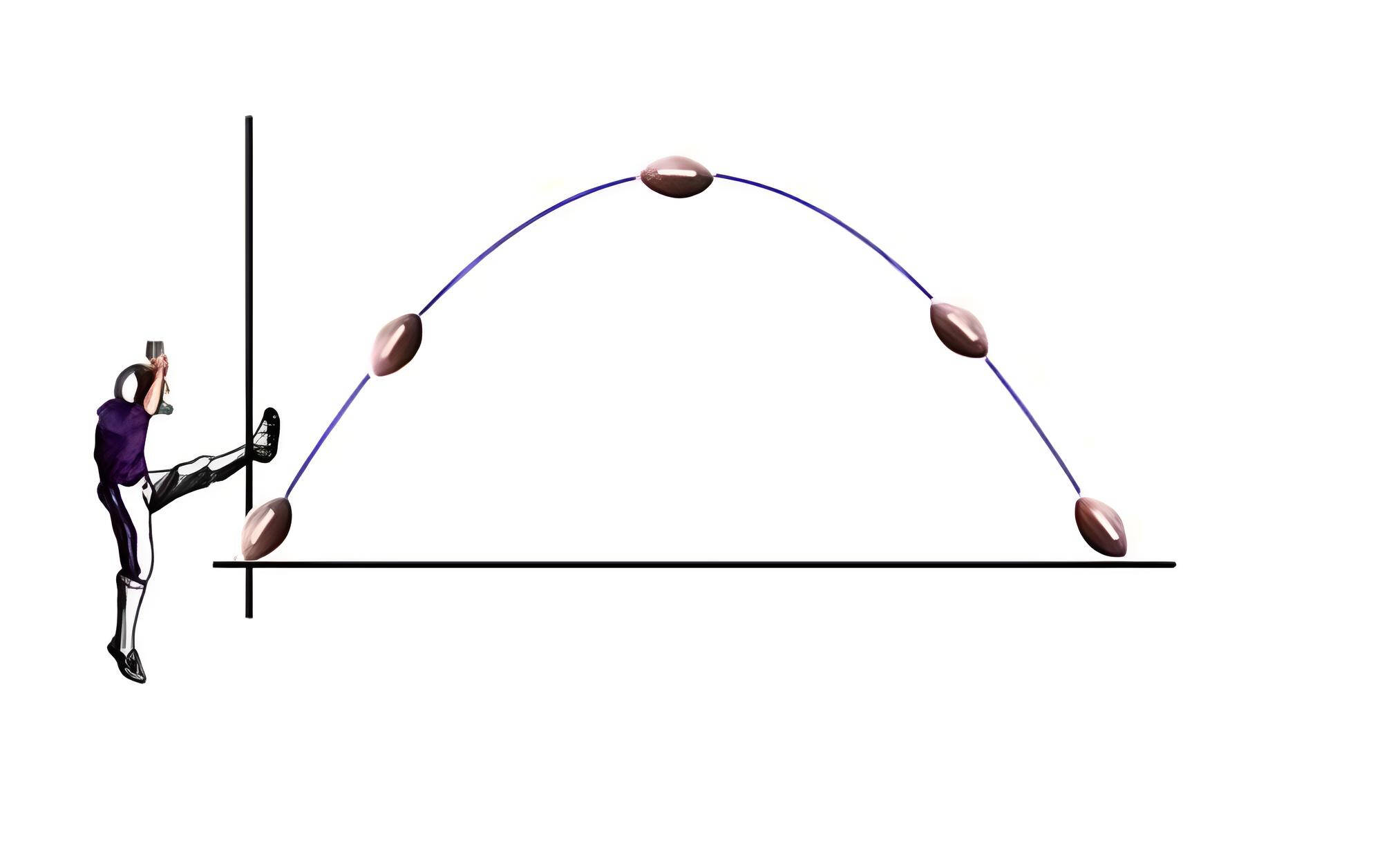Dimensional Analysis for 11th Class Students (CBSE, India)
Introduction to Dimensional Analysis
Dimensional analysis is a fundamental method in physics that helps in understanding the relationship between different physical quantities. It involves the use of dimensions of physical quantities to derive relationships among them, ensuring the consistency of equations, and to check the plausibility of physical laws and formulas.
Basic Concepts
- Dimensions: The dimensions of a physical quantity are the powers to which the fundamental quantities are raised to represent that quantity. Fundamental quantities include mass (M), length (L), time (T), electric current (I), thermodynamic temperature (
 ), amount of substance (N), and luminous intensity (J).
), amount of substance (N), and luminous intensity (J). - Dimensional Formula: It expresses a physical quantity in terms of the basic dimensions. For example, the dimensional formula of velocity is
![Rendered by QuickLaTeX.com [M^0 L^1 T^{-1}]](https://physicsqanda.com/wp-content/ql-cache/quicklatex.com-070b2a6b73d427ed19db89c1cfe86585_l3.png) , as velocity is distance (L) per unit time (T).
, as velocity is distance (L) per unit time (T).
The principle of homogeneity
The principle of homogeneity of dimensions is a fundamental concept in dimensional analysis. It states that an equation is dimensionally correct if, and only if, the dimensions of all the terms on both sides of the equation are the same. This principle is useful in:
Checking the Correctness of Equations
By ensuring that both sides of an equation have the same dimensions, we can check its correctness. For instance, in the equation ![]() , the dimensions on both sides match, indicating a potentially correct equation.
, the dimensions on both sides match, indicating a potentially correct equation.
Dimensional Formulas:
- Force (F): Force is defined as the product of mass and acceleration. The dimensional formula for force is derived from Newton’s second law of motion, ( F = ma ). We will derive its dimensions from the dimensions of mass and acceleration.
- Mass (m): The dimensional formula for mass is simply represented as [M].
- Acceleration (a): Acceleration is the rate of change of velocity with time. Velocity has the dimensions of length per time, and acceleration is velocity per time. Therefore, the dimensional formula for acceleration is derived from the dimensions of length and time.
Calculating Dimensions:
- Dimensions of Mass (m): [M]
- Dimensions of Acceleration (a):
- Velocity
![Rendered by QuickLaTeX.com \rm (v) = Length/Time = [LT^{-1}]](https://physicsqanda.com/wp-content/ql-cache/quicklatex.com-d0373f59d7953fd49277586f7520053c_l3.png)
- Acceleration,
![Rendered by QuickLaTeX.com \rm (a) = Velocity/Time = ([LT^{-1}])/[T] = [LT^{-2}]](https://physicsqanda.com/wp-content/ql-cache/quicklatex.com-f0fb1768391793e92a7eb592546fd8d3_l3.png)
So, the dimensional formula for acceleration is![]() .
.
- Dimensions of Force (F) using (
 ):
):
![Rendered by QuickLaTeX.com \rm Force = Mass \times Acceleration = [M] × [LT^{-2}]](https://physicsqanda.com/wp-content/ql-cache/quicklatex.com-f6f5e35881b7b56ecffacd74abf6e00e_l3.png)
- Thus, the dimensional formula for force is
![Rendered by QuickLaTeX.com \rm [MLT^{-2}]](https://physicsqanda.com/wp-content/ql-cache/quicklatex.com-243b8409647c231c0b08e6f9759a552b_l3.png) .
.
Verification:
Now, if we look at the formula (![]() ), the dimensions of the left side (Force,
), the dimensions of the left side (Force,![]() ) should match with the dimensions of the right side (
) should match with the dimensions of the right side (![]() ).
).
Since the dimensions on both sides of the equation match ![]() ), it proves that the formula (
), it proves that the formula ( ![]() ) is dimensionally consistent and correct according to dimensional analysis.
) is dimensionally consistent and correct according to dimensional analysis.
Deriving Relations
Dimensional analysis can be used to derive relations between different physical quantities. For example, to derive the relation for the time period (T) of a simple pendulum using dimensional analysis, we need to understand that the time period depends on the length of the string (l) and the acceleration due to gravity (g). The form of the relationship can be assumed to be:
![]()
where ![]() is a dimensionless constant, and
is a dimensionless constant, and ![]() and
and ![]() are powers to be determined.
are powers to be determined.
Dimensional Formulas:
- Time Period (T): The time period is a measure of time. Hence, its dimensional formula is
![Rendered by QuickLaTeX.com [T]](https://physicsqanda.com/wp-content/ql-cache/quicklatex.com-9c2bd19e299bfd0ac4cbe83df4dcb5ef_l3.png) .
. - Length of the String (l): Length is a fundamental quantity with the dimensional formula
![Rendered by QuickLaTeX.com [L]](https://physicsqanda.com/wp-content/ql-cache/quicklatex.com-04fcbbd68b77a7e1b34747c3af39f8f1_l3.png) .
. - Acceleration Due to Gravity (g): Acceleration has the dimensional formula
![Rendered by QuickLaTeX.com [LT^-2]](https://physicsqanda.com/wp-content/ql-cache/quicklatex.com-411caac30b225ccbbd893f174fc672ef_l3.png) , as explained earlier.
, as explained earlier.
Applying Dimensional Analysis:
The dimensions of the left-hand side (Time period, T) must equal the dimensions of the right-hand side ![]() . So,
. So,
![]()
Expanding the right-hand side,
![]()
For the equation to be dimensionally consistent, the powers of ![]() and
and ![]() on both sides must be equal. This gives us two equations:
on both sides must be equal. This gives us two equations:
- The power of
![Rendered by QuickLaTeX.com [L]](https://physicsqanda.com/wp-content/ql-cache/quicklatex.com-04fcbbd68b77a7e1b34747c3af39f8f1_l3.png) on the left-hand side
on the left-hand side  (since there is no
(since there is no ![Rendered by QuickLaTeX.com [L]](https://physicsqanda.com/wp-content/ql-cache/quicklatex.com-04fcbbd68b77a7e1b34747c3af39f8f1_l3.png) in
in ![Rendered by QuickLaTeX.com [T]](https://physicsqanda.com/wp-content/ql-cache/quicklatex.com-9c2bd19e299bfd0ac4cbe83df4dcb5ef_l3.png) ), which equals the sum of the powers of
), which equals the sum of the powers of ![Rendered by QuickLaTeX.com [L]](https://physicsqanda.com/wp-content/ql-cache/quicklatex.com-04fcbbd68b77a7e1b34747c3af39f8f1_l3.png) on the right-hand side:
on the right-hand side:  .
. - The power of
![Rendered by QuickLaTeX.com [T]](https://physicsqanda.com/wp-content/ql-cache/quicklatex.com-9c2bd19e299bfd0ac4cbe83df4dcb5ef_l3.png) on the left-hand side
on the left-hand side  (from
(from ![Rendered by QuickLaTeX.com [T]](https://physicsqanda.com/wp-content/ql-cache/quicklatex.com-9c2bd19e299bfd0ac4cbe83df4dcb5ef_l3.png) ), which equals the sum of the powers of
), which equals the sum of the powers of ![Rendered by QuickLaTeX.com [T]](https://physicsqanda.com/wp-content/ql-cache/quicklatex.com-9c2bd19e299bfd0ac4cbe83df4dcb5ef_l3.png) on the right-hand side:
on the right-hand side:  .
.
So we have,
From the second equation, solving for ![]() ,
,
![]()
Substituting this value of ![]() into the first equation,
into the first equation,
![]()
Solving for ![]() ,
,
![]()
Therefore, the relation for the time period (![]() ) of a simple pendulum is:
) of a simple pendulum is:
![]()
or equivalently,
![Rendered by QuickLaTeX.com \[\boxed{ T = k \cdot \sqrt{\dfrac{l}{g}}} \]](https://physicsqanda.com/wp-content/ql-cache/quicklatex.com-66c97856b05f412ac6458a920492e89d_l3.png)
Here, k is a dimensionless constant that cannot be determined through dimensional analysis alone and is found to be ![]() through experimental observations. Hence, the final formula is:
through experimental observations. Hence, the final formula is:
![Rendered by QuickLaTeX.com \[ \boxed{T = 2\pi \cdot \sqrt{\frac{l}{g}} }\]](https://physicsqanda.com/wp-content/ql-cache/quicklatex.com-20c87a98780400f1026e11e2b1989404_l3.png)
Converting Units
It helps in converting units from one system to another. For instance, converting speed from 108 kilometers per hour to meters per second.
The conversion factors are:
![]()
![]()
![]()
![]()
Illustrations for Understanding
Illustration 1:
To check whether the formula ![]() is dimensionally correct using dimensional analysis, we need to verify that the dimensions on both sides of the equation are the same. In this formula,
is dimensionally correct using dimensional analysis, we need to verify that the dimensions on both sides of the equation are the same. In this formula, ![]() is the final velocity,
is the final velocity, ![]() is the initial velocity,
is the initial velocity, ![]() is acceleration, and
is acceleration, and ![]() is time.
is time.
Dimensional Formulas:
- Velocity (
 and
and  ): Velocity is the rate of change of displacement. Its dimensions are
): Velocity is the rate of change of displacement. Its dimensions are ![Rendered by QuickLaTeX.com [LT^{-1}]](https://physicsqanda.com/wp-content/ql-cache/quicklatex.com-cc78ad4e469156a0c6e65987ad21c012_l3.png) (length over time).
(length over time). - Acceleration (
 ): Acceleration is the rate of change of velocity. Its dimensions are
): Acceleration is the rate of change of velocity. Its dimensions are ![Rendered by QuickLaTeX.com [LT^{-2}]](https://physicsqanda.com/wp-content/ql-cache/quicklatex.com-a802537278cd56fe37153b0af4088a5d_l3.png) (length over time squared).
(length over time squared). - Time (
 ): Time is a fundamental quantity with dimensions
): Time is a fundamental quantity with dimensions ![Rendered by QuickLaTeX.com [T]](https://physicsqanda.com/wp-content/ql-cache/quicklatex.com-9c2bd19e299bfd0ac4cbe83df4dcb5ef_l3.png) .
.
Applying Dimensional Analysis:
The dimensions of each term in the formula ![]() are:
are:
- Dimensions of
 and
and  :
: ![Rendered by QuickLaTeX.com [LT^{-1}]](https://physicsqanda.com/wp-content/ql-cache/quicklatex.com-cc78ad4e469156a0c6e65987ad21c012_l3.png)
- Dimensions of
 :
: ![Rendered by QuickLaTeX.com [LT^{-2}] \times [T] = [LT^{-1}]](https://physicsqanda.com/wp-content/ql-cache/quicklatex.com-dc1d8001df68f29558db8629d68ea461_l3.png)
Now, let’s check the equation:
- The left-hand side (LHS),
 , has dimensions
, has dimensions ![Rendered by QuickLaTeX.com [LT^{-1}]](https://physicsqanda.com/wp-content/ql-cache/quicklatex.com-cc78ad4e469156a0c6e65987ad21c012_l3.png) .
. - The right-hand side (RHS),
 , also has dimensions
, also has dimensions  (since both
(since both  and
and  separately have these dimensions).
separately have these dimensions).
Since the dimensions of the LHS match the dimensions of the RHS, the formula ![]() is dimensionally consistent and correct according to dimensional analysis.
is dimensionally consistent and correct according to dimensional analysis.
Illustration 2:
To derive the formula for kinetic energy using dimensional analysis, we first need to identify the fundamental physical quantities that kinetic energy depends on. Kinetic energy is the energy of an object due to its motion, and it is typically a function of the mass of the object (m) and its velocity (v).
The task is to express kinetic energy (K.E.) in terms of the dimensions of mass (m) and velocity (v). The form of the relationship can be assumed as:
![]()
where ![]() is a dimensionless constant, and
is a dimensionless constant, and ![]() and
and ![]() are the powers to be determined.
are the powers to be determined.
Dimensional Formulas:
- Kinetic Energy (K.E.): Energy has the dimensional formula
![Rendered by QuickLaTeX.com [ML^2T^{-2}]](https://physicsqanda.com/wp-content/ql-cache/quicklatex.com-15e28b6978dbdcc94090b13175822bef_l3.png) .
. - Mass (m): The dimensional formula for mass is
![Rendered by QuickLaTeX.com [M]](https://physicsqanda.com/wp-content/ql-cache/quicklatex.com-c66ec33ed2edaa35cd49d02c69e089a3_l3.png) .
. - Velocity (v): The dimensional formula for velocity is
![Rendered by QuickLaTeX.com [LT^{-1}]](https://physicsqanda.com/wp-content/ql-cache/quicklatex.com-cc78ad4e469156a0c6e65987ad21c012_l3.png) .
.
Applying Dimensional Analysis:
The dimensions of the left-hand side (Kinetic Energy, K.E.) must equal the dimensions of the right-hand side ![]() . So,
. So,
![]()
Expanding the right-hand side,
![]()
For the equation to be dimensionally consistent, the powers of [M], [L], and [T] on both sides must be equal. This gives us three conditions:
- The power of [M] on the left-hand side = 1, which equals the power of [M] on the right-hand side:
 .
. - The power of [L] on the left-hand side = 2, which equals the power of [L] on the right-hand side:
 .
. - The power of [T] on the left-hand side = -2, which equals the power of [T] on the right-hand side:
 .
.
So we have,
Therefore, the dimensional formula for kinetic energy in terms of mass and velocity is:
![]()
or equivalently,
![]()
Here, ![]() is a dimensionless constant that cannot be determined through dimensional analysis alone. However, through experimental observations, it is found that
is a dimensionless constant that cannot be determined through dimensional analysis alone. However, through experimental observations, it is found that ![]() . Hence, the formula for kinetic energy is:
. Hence, the formula for kinetic energy is:
![]()
Limitations of Dimensional Analysis
- It cannot derive formulas that have a dimensionless constant (e.g., π, e).
- It is not helpful in deriving equations where more than one physical quantity has the same dimensions.
- It does not give information about the nature of the physical quantity (scalar or vector).
Conclusion
Dimensional analysis is a powerful tool in physics, especially for students, as it aids in understanding the core concepts of physical quantities and their interrelations. It fosters a deeper conceptual understanding and is crucial for solving complex problems in physics. Students are encouraged to practice various problems to gain proficiency in this method.




